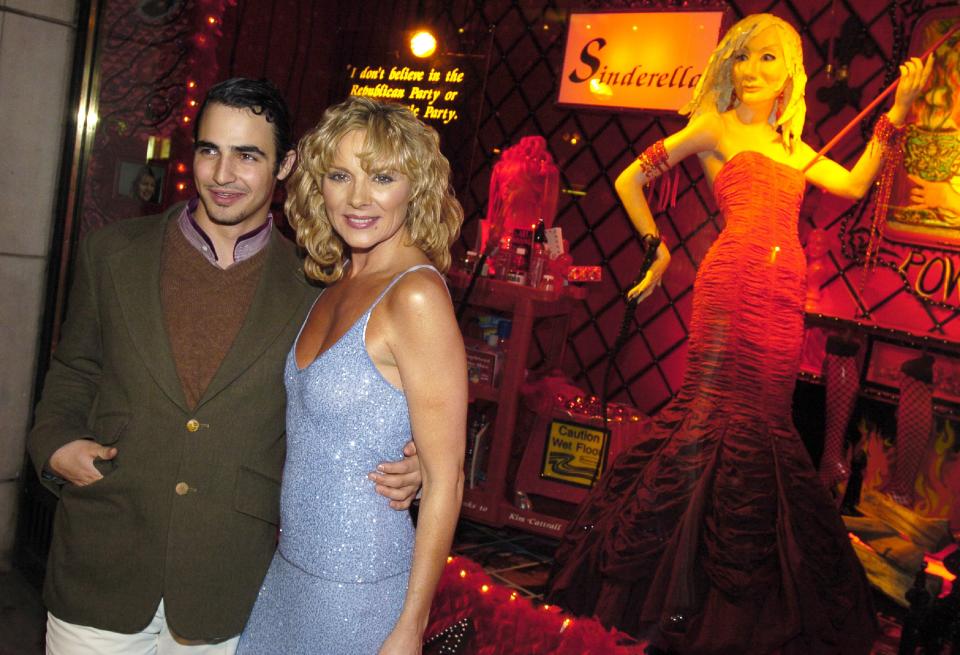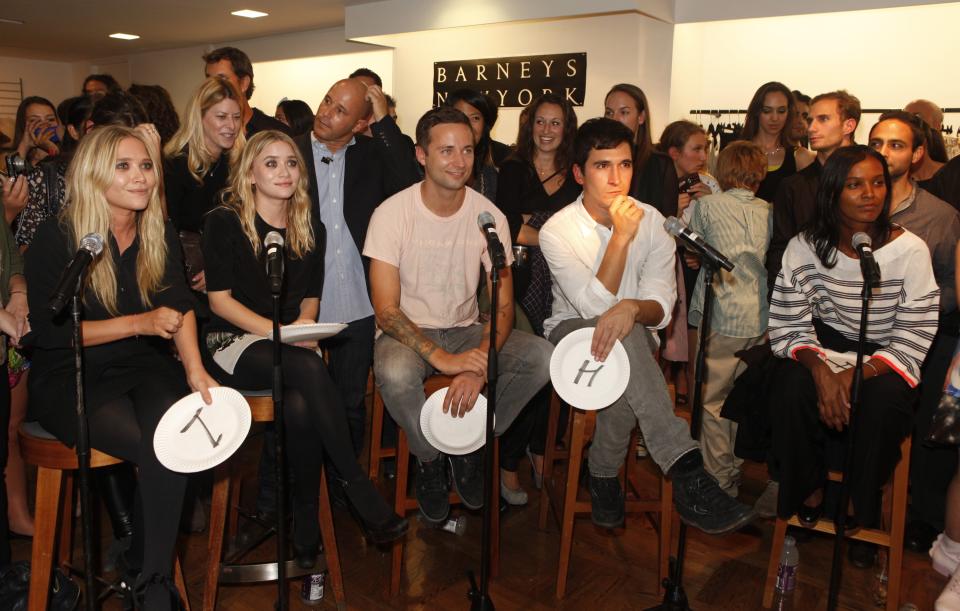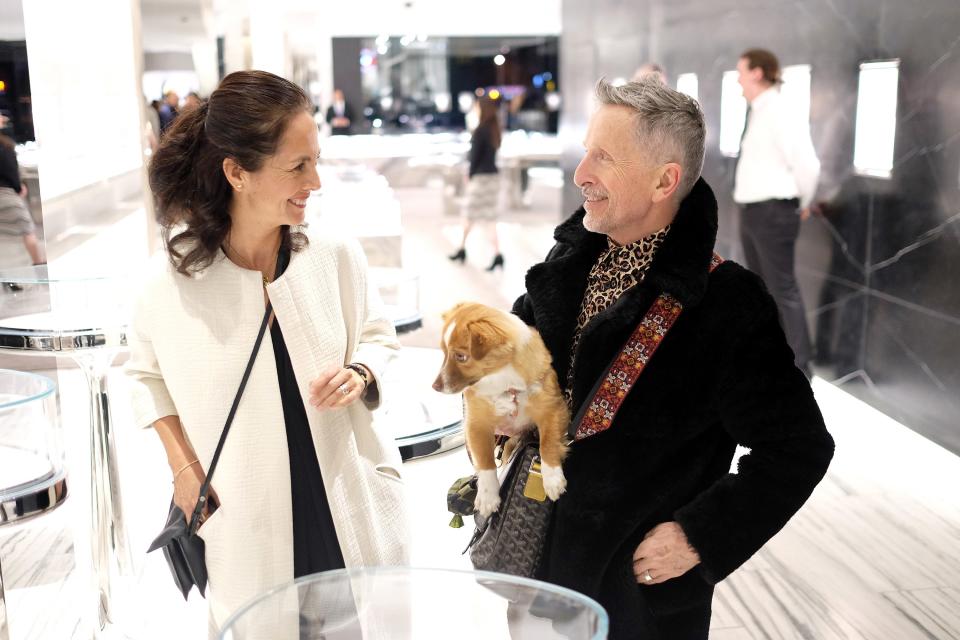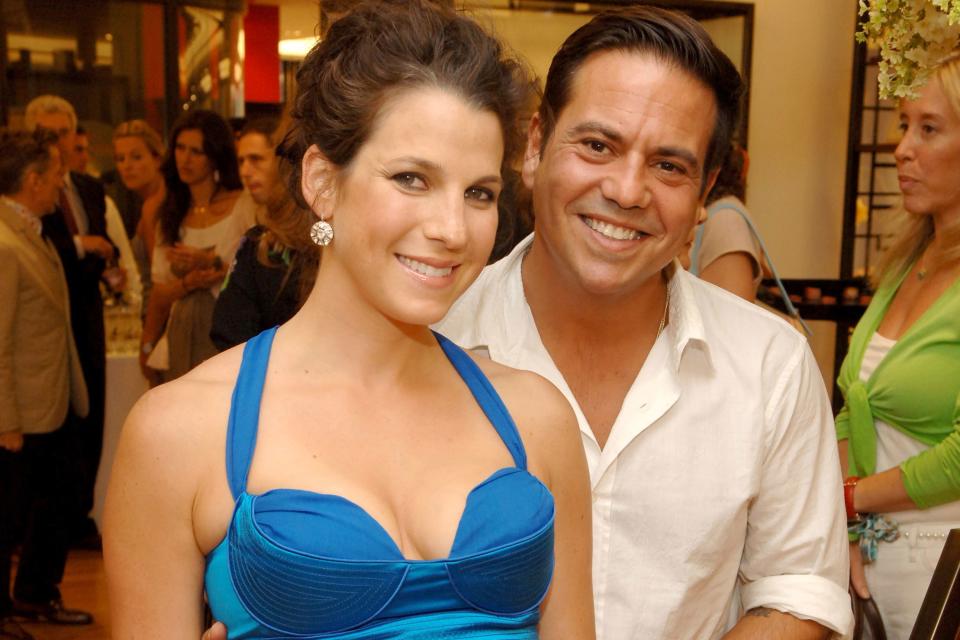“Barneys Started Our Career”: Five New York Designers Remember the Department Store’s Impact as Its Fate Hangs in Limbo
Since this article was published on October 28, 2019, Barneys New York has been sold to Authentic Brands Group and B. Riley for $271.4 million.
Last week Champagne flutes were heartily clinked at the opening of Nordstrom’s seven-floor outpost on 57th Street and Broadway, with guests milling through dedicated Burberry and Comme des Garçons shop-in-shops. Across the Hudson River, guests rode a roller coaster at the christening of the new American Dream mall in East Rutherford, New Jersey; when its retail component opens in March 2020, it will house outposts of Hermès, Saint Laurent, and Zara. Not so long ago, these kinds of consumerist thrills were had at Barneys New York.
But a lot has changed in the house that Barney Pressman built. Started as a menswear retailer in 1923 and expanded to include high-end womenswear in the ’60s, Barneys New York was one of New York’s flagship retailers by the late ’70s. It continued its dominance—and relevance—well into the aughts by establishing itself as a place for the new, the cool, and the super design-y. More than just a place to discover Rick Owens leather jackets and Proenza Schouler bustiers, Barneys acted as a connective tissue in the New York creative scene. It was where in-the-know people went to shop (just last week Patti Smith recalled buying a favorite Armani jacket at Barneys on steep discount), gaze at fantastic windows designed by Simon Doonan, and snack on french fries and Niçoise salads at Fred’s. In popular culture the store became shorthand for Manhattanite polish: Both Friends’s Rachel Green and Seinfeld’s Elaine Benes shopped there.
That insider brand of New Yorkiness eventually fell out of favor, though—not just in mainstream culture but within Barneys itself. It’s 2019 and the people who once swore by Barneys are now buying fashion online and FreshDirect-ing their groceries instead of milling about at the bankrupt Dean & Deluca. Internally, when Barneys rebranded in 2010 under the leadership of CEO Mark Lee, it traded its distinctive red awnings for black versions and ditched its famously kooky Doonan-designed windows for arty, intellectual ones. The harshest critics of the store’s new look worried that the style arbiter of NYC had become a bit Anywhere, USA.
On August 6 of this year, Barneys filed for bankruptcy. Its fate now hangs in limbo. Just after the announcement was made, two rival bidders with two rival plans emerged. In one corner is Authentic Brands Group, which has expressed the intention, should its $271 million bid be approved by the court on October 31, to close all remaining Barneys stores and license the Barneys New York name to Saks Fifth Avenue. In the other corner is investor Sam Ben-Avraham, who has been raising funds from the likes of Andrew Rosen and Khajak Keledjian and rallying support with a @savebarneys Instagram account and a petition, which have garnered 6,500 followers and 20,000 signatures, respectively.
It’s unclear what will happen when the gavel is struck this Thursday in New York’s bankruptcy court. As the fashion community waits to see how things shake out, a number of the store’s designer partners discussed what made Barneys the institution it was.

Barneys New York Holiday Windows 2003 Fairytales and the City
A Home of the New
The Barneys New York of today started to take shape in the late ’60s and early ’70s. As founder Barney Pressman and his son Fred moved away from inexpensive goods and into womenswear, they began a decade-spanning international project that would reshape luxury fashion. Their first big get was Giorgio Armani. The Pressmans were the first to buy the Italian designer’s clothing for the United States.
The store’s commitment to importing brands and buoying new local talent continued into the ’80s, ’90s, and aughts. The list of brands it was among the first to carry includes the most influential labels of the era: Comme des Garçons, Yohji Yamamoto, Martin Margiela, Dries Van Noten, Prada, Ann Demeulemeester, Rick Owens, and Alexander Wang, among them.
No story of late is quite as impactful as that of Proenza Schouler. “I don’t think we’d be where we are today without Barneys,” Proenza Schouler cofounder Jack McCollough tells Vogue Runway. As the legend goes: It was 2003 and Julie Gilhart was a judge at a Parsons fashion show, where McCollough and his partner Lazaro Hernandez were presenting their senior thesis collection. After seeing their collection, she asked the duo to come in for a meeting.
“I remember going into their corporate offices when we were all of 20 years old with our senior-year collection and having to show the collection to the buying team,” Hernandez continues. “We didn’t know what the hell we were doing there. Then we came home to find an email in our inbox with an order for the collection. That’s when we dropped out of school and went into what we’re still doing now. As Jack said, they started our careers and they just mean so much to us.”
It’s not only just the Proenza Schouler duo who remember Barneys as the ultimate launching pad for young talent. Barneys was the first to scoop up Narciso Rodriguez in 1997. “It meant a great deal to me to be able to have my first collection and my first deliveries shown in such a beautiful way by them,” Rodriguez says. The store discovered Maria Cornejo in 1999 and Zac Posen in 2001.
“The first luxury buyer to ever visit me was Julie Gilhart,” Posen remembers. “I was studying at Central Saint Martins, and I remember getting the call that she had flown to London and wanted to see the collection. I was just a kid in a basement ripping up some stuff, hand-making, hand-dyeing, bleaching, and washing things.” That visit occurred in the late ’90s. When he launched in 2001, Barneys was his first retailer. “It was a big deal. Huge.”
With all its support came strict rules about exclusivity, which, along with the occasional late payment, could make it difficult for young talents to balance the books. Still, the industry seems to agree: To be in Barneys meant you’d made it. “They have been really good at breaking new talent and supporting new businesses,” says Maria Cornejo.

Barneys New York Celebrates Fashion's Night Out
Where Art Met Commerce
Before people lined up to shop skirt-pants at Dover Street Market or ceramic vases at Totokaelo, Barneys was HQ for hard-core aesthetes. “I think what it really comes down to is that Barneys stood for true design,” says Thom Browne, whose label is stocked at Barneys. “They, of course, were a business, and they had to support things that were salable for their stores, but they always took the chance on elevating their customer to their level and not always taking the safe route. When you walked into Barneys you saw things that made you see fashion differently. They had real merchants that really supported true design. That’s what Barneys really stood for.”
“They definitely took risks in selection,” echoes Posen of the Barneys buy. “They would pick the edgier, cooler pieces and were really about pushing that in my work and pushing that in other young creatives’ work. They introduced a lot of us to the marketplace and were willing to give things a try.”
Browne chalks up the store’s aesthetic credibility to the many buyers and creatives that have worked there over the years. “They are true merchants,” Browne says. “You really have superstars in the world of fashion, real visionaries, like Tom Kalenderian, Jay Bell, Daniella Vitale, Mark Lee when he was there, and Simon Doonan, of course. They are just people that are true visionaries. I think that is also a part of what Barneys stands for and that is also something that New York can’t lose and fashion can’t lose.”
Barneys’s place in the retail landscape is now less secure than when its visionary merchants became fashion stars. Direct-to-consumer brands are vying for shoppers’ attention and dollars, while the rise of nontraditional retail schedules—see the drop as popularized by Supreme—have challenged older businesses to keep up. (Barneys tried its own take on the drop in 2018 to mixed results.) Its e-commerce is said to make up a large portion of its business, though the brand still owes upwards of $20 million to many of its vendors.

Barneys New York Celebrates Fashion's Night Out
Selling New York, Around the Country and Around the World
“It’s so iconic New York, more than any other department store,” says Hernandez. “Think of Saks and Neimans and Nordstrom—those are all amazing stores, but they are more American. Barneys is really New York. That’s where a lot of our friends and peers have shopped throughout the years. That’s the place New Yorkers go to shop.”
The way the store is merchandised and the items it carries play into its New Yorkiness. “I design for a very urban woman here in New York; she’s a very New York–centric character, and that’s their customer and it’s also their image,” says Rodriguez.
Being a New York institution comes with a price—literally. Barneys’s rent hike, which is partially the cause for its bankruptcy filing, raised its monthly rent to $30 million. “I think it would be very sad for the city, but as a New Yorker, I have to say that I’ve watched many institutions evolve and change. Change is a part of the city,” says Posen, a lifelong New Yorker. “New ideas come about too, and I think on a positive note, we have to look at it that way.”

maria cornejo and simon doonan
Beyond Fashion
Barneys also served as a creative partner for fashion brands. “Not surprisingly, they were a dream to work with because they wanted to do something that was as provocative as I wanted to do,” says Browne, who collaborated with Barneys New York on a store takeover in 2018 that included window displays, a capsule collection, homeware and jewelry collaborations, a short film, in-store installations like a photo booth, and a signature hamburger offered at Fred’s. “One of the nicest experiences was being able to create things that are outside of my world, like the hamburger that we had during the activation,” Browne continues. “That was always so special about them, they weren’t just purely fashion. They weren’t just a fashion icon, but a cultural icon and a real New York institution, and I think that’s what the saddest thing is. New York really can’t lose Barneys.”
On the occasion of Zero + Maria Cornejo’s 15th anniversary, the retailer dedicated all of its windows across America to her collection. “That was such an amazing push for us as a company,” Cornejo begins, explaining that a launch event for a coordinating capsule collection also included a collaboration with Cindy Sherman. “We asked Cindy Sherman, who is a great client, to do her first selfies on Instagram. She hadn’t done that before,” Cornejo says. “We had such a great turnout and a great energy.”

105435463
What’s Next?
Barneys’s fate will be decided on October 31—and the waiting game is hitting the fashion community hard. “For me, it’s very emotional. I’ve been with Barneys since the beginning, since I opened the store,” says Cornejo. “In the creative design community, Barneys has been the first stop. Now I’m really sad because I live in Brooklyn, and the Barneys in Brooklyn has closed.”
“Whatever happens I hope that the stores do still exist and it remains what it always stood for and has been. It has been the champion for young designers, it has been the champion for true design, and I just hope that whatever happens it remains able to be that,” says Browne.
It’s not curtains yet. Hernandez says, “We want the best for them, obviously. We want them to find a going-concern buyer where the operations can continue. They’re going to have to deal with some stuff and fix whatever is going on in the organization, but those are business issues that a lot of different organizations across many different industries face. It’s a changing world and we have to adapt and shrink in some parts and grow in other parts. It’s a living, breathing being, this company, and I think if they find the right person, there’s no reason Barneys can’t continue. On so many levels we want nothing more than to see it continue.”
Originally Appeared on Vogue

